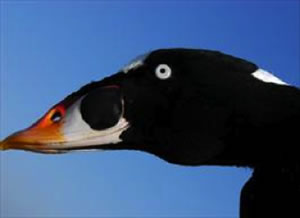Bird Monitoring Methods

Surf Scoter, San Pablo Bay, CA.
Waterbird guilds, primarily shorebirds and waterfowl, respond to restoration of a variety of different habitats and are good indicators of habitat change (Croonquist and Brooks 1991, Taft et al. 2008). Waterbirds are closely linked to the spatial distribution and abundance of their prey, which in turn are largely influenced by hydrology and water quality conditions (Weller and Fredrickson 1974, Kaminski and Prince 1981 and 1984, Takekawa et al. 2009).
For tidal marsh restorations, the primary objective of avian surveys is change detection over time for the purposes of adaptive management. When surveys are combined with environmental data (e.g. habitat, behavior, food availability, weather, predators) they can also be a powerful research tool.
Birds easily move within and between habitats, therefore site selection will depend on restoration goals, objectives and resources. Considerations include:
- Cover entire restoration area or only part of it?
- If only sampling part, which subset of habitats should be included (e.g. high marsh, forested wetlands, mudflats)? This will be largely dependent on the species of interest.
- Should surveys be conducted outside of the restoration area? What is the area of influence of the restoration?
- Should reference site(s) be included?
Once survey boundaries are defined, methods can be chosen. Bird monitoring methods generally fall into three categories (FAO 2007):
- Inventory and monitoring
- complete counts (census)
- incomplete counts corrected for detectability (Thompson 2002, Gregory et al. 2004)
- Movement patterns
- Behavioral studies
Within each category, there are a wide variety of methods available that range from volunteer observations to satellite telemetry. Here we present a list of potential methods in order of lowest to highest complexity in terms of resources required (e.g. staff and equipment) and linkages to environmental conditions (e.g. habitat, food availability, contaminants, etc.).
Area Survey and Variable Circular Plot methods link to slideshows and downloadable standard operating procedures and datasheets. Other methods are linked to relevant program information or projects applying the method.
- Volunteer observations and/or hunter harvest surveys
- Audubon Christmas bird count
- US Fish & Wildlife Service midwinter waterfowl survey
- Area Survey (high and/or low tide)
- Variable Circular Plot
- Nest surveys
- Capture for condition and banding
- Habitat Use (Radio Telemetry)
- Habitat Use (Satellite Telemetry)
- Capture for diet and/or contaminants
- Carry capacity surveys
- Disease transmission in wild bird populations
References
FAO. 2007. Wild Birds and Avian Influenza: an introduction to applied field research and disease sampling techniques.Edited by D. Whitworth, S.H. Newman, T. Mundkur and P. Harris. FAO Animal Production and Health Manual, No. 5. Rome. (also available at www.fao.org/avianflu)
Weller, M. W. and L. H. Fredrickson. 1974. Avian ecology of a managed glacial marsh. Living Bird 12:269-291.
